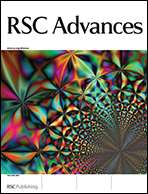Use of degradable cationic surfactants with cleavable linkages for enhancing the chemiluminescence of acridinium ester labels†
Abstract
Chemiluminescent acridinium dimethylphenyl esters labels are widely used for clinical diagnostics in automated immunochemistry instruments such as in Siemens' Healthcare Diagnostics' ADVIA Centaur® systems. Light emission from these labels is triggered with alkaline peroxide in the presence of the cationic surfactant cetyltrimethylammonium chloride (CTAC). CTAC plays a very important role in the chemiluminescence process by both accelerating emission kinetics as well as increasing light yield from acridinium esters thereby enabling fast and sensitive measurements in automated assays. However, cationic surfactants such as CTAC are quite toxic especially to aquatic life when discharged into the environment. In the current study, we report that less toxic, degradable cationic surfactants containing carbonate or amide linkages are effective substitutes for CTAC in enhancing chemiluminescence from acridinium ester labels. The carbonate cationic surfactant 2 in particular closely mimicked the behavior of CTAC in enhancing acridinium ester chemiluminescence and showed excellent long term stability when stored in acidic solution. Our study is the first to report the use of degradable surfactants for enhancing the chemiluminescence of commercially-used, acridinium ester labels. Degradable surfactants are also likely to be useful for the chemiluminescence enhancement of other commercially-used labels such as acridinium sulfonamides and adamantly dioxetanes.


 Please wait while we load your content...
Please wait while we load your content...